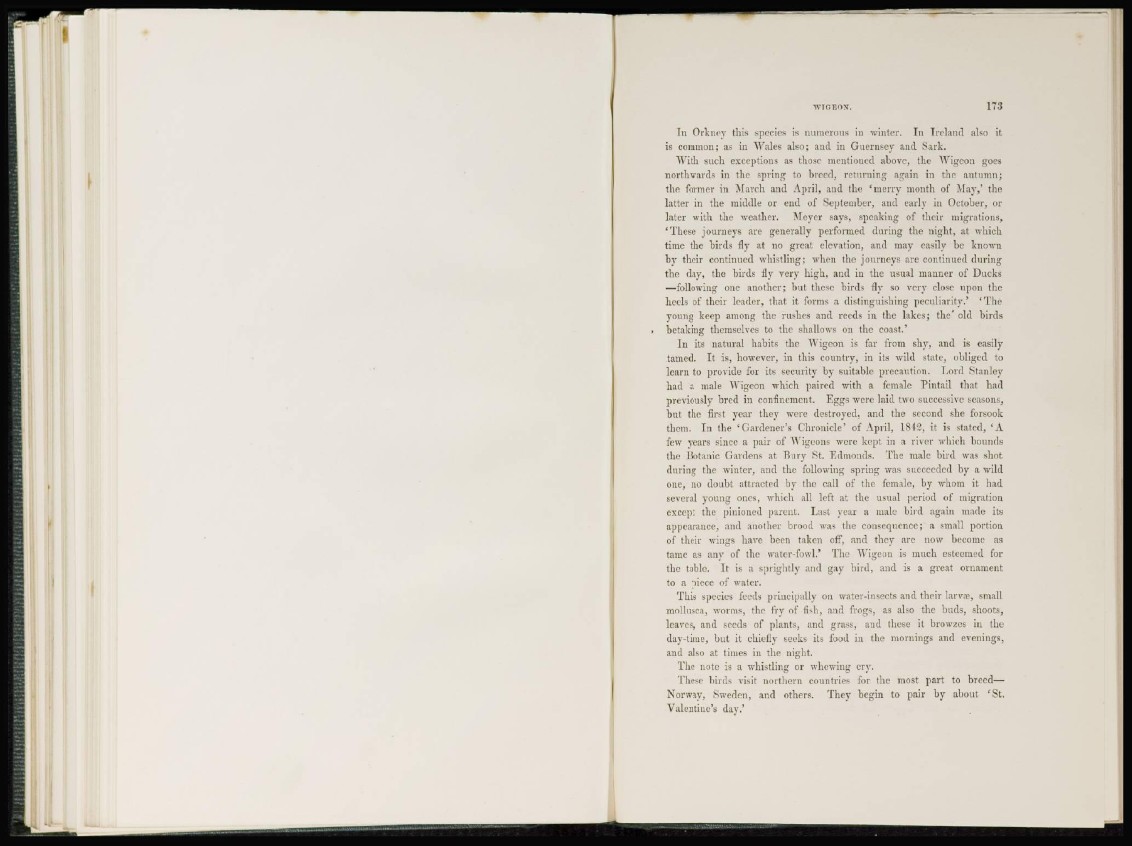
I n Orkney this species is numerous in winter. In Ireland alsn it
is common; as in Wales also; and in Guernsey and Sark.
With such exceptions as those mentioned above, the Wigeon goes
northwards in the spring to breed, returning again in the autumn;
the former in March and April, and the 'merry month of May,' the
latter in the middle or end of September, and early in October, or
later with the weather. Meyer says, speaking of their migrations,
'These journeys are generally performed during the night, at which
time the birds fly at no great, elevation, and may easily be known
by their continued whistling; when the journeys are continued during
the day, the birds fly very high, and in the usual manner of Ducks
—following one another; but these birds fly so very close upon the
heels of their leader, that it forms a distinguishing peculiarity.1 'The
young keep among the rushes and reeds in the lakes; the* old birds
betaking themselves to the shallows on the coast.'
I n its natural habits the Wigeon is far from shy, and is easily
tamed. It is, however, in this country, in its wild state, obliged to
learn to provide for its security by suitable precaution. Lord Stanley
had a male Wigeon which paired with a female Pintail that had
previously bred in confinement. Eggs were laid two successive seasons,
but the first year they were destroyed, and the second she forsook
them. In the 'Gardener's Chronicle' of April, 1842, it is stated, 'A
few years since a pair of Wigeons were kept in a river which bounds
the Botanic Gardens at Bury St. Edmonds. The male bird was shot
during the winter, and the following spring was succeeded by a wild
one, no doubt attracted by the call of the female, by whom it had
several young ones, which all left at the usual period of migration
except the pinioned parent. Last year a male bird again made its
appearance, and another brood was the consequence; a small portion
of their wings have been taken off, and they arc now become as
tame as any of the water-fowl.' The Wigeon is much esteemed for
the table. It is a sprightly and gay bird, and is a great ornament
to a piece of water.
This species feeds principally on water-insects and their larva?, small
mollusca, worms, the fry of fish, and frogs, as also the buds, shoots,
leaves, and seeds of plants, and grass, and these it browzes in the
day-time, but it chiefly seeks its food in the mornings and evenings,
and also at times in the night.
The note is a whistling or whewing cry.
These birds visit northern countries for the most part to breed—
Norway, Sweden, and others. They begin to pair by about ' St.
Valentine's day.'